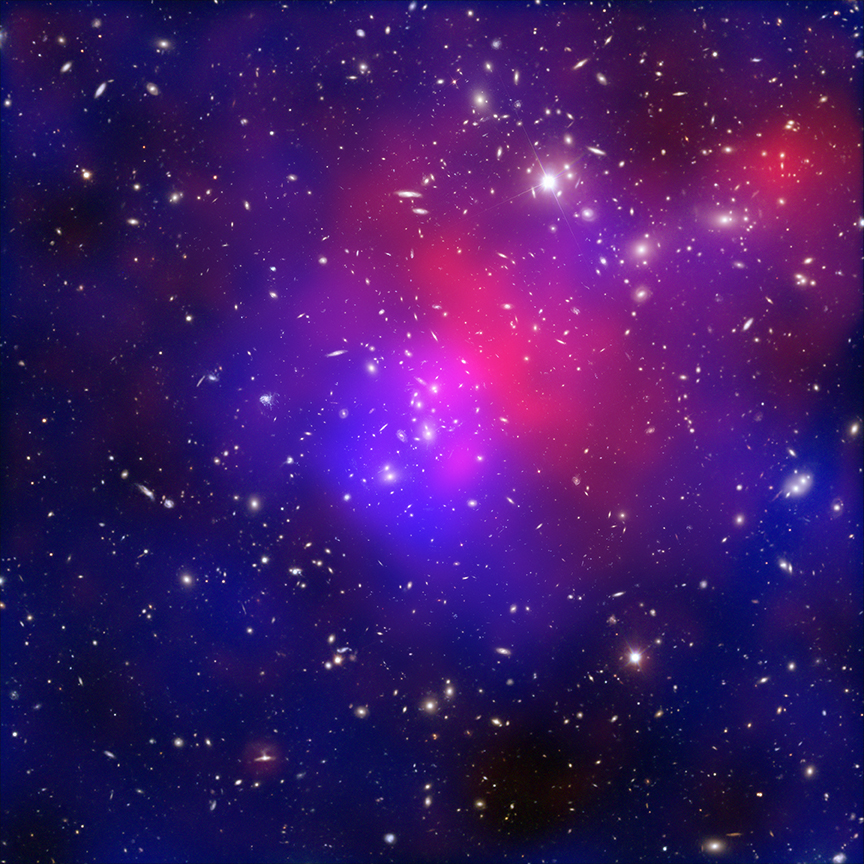
It's hard to picture just how big the Universe is. For instance, the Earth seems like a big place to us, but you could fit about one million Earths inside our nearest star, the Sun. And the Sun is just one of billions of stars that make up our galaxy, which is called the Milky Way. When you think about how the Milky Way is just one galaxy in a group of about 40 nearby galaxies, the Universe is starting to seem like a big place!
This new picture shows a different group of galaxies that is much bigger than ours, which is called Pandora's Cluster. The picture shows such a big part of the Universe that each galaxy only looks like a little white scratch on the photo! The galaxies are only a tiny part of what is really inside Pandora's Cluster. It is also made up of hot gas (shown in pink in the photo) and lots of strange stuff that doesn't give off any light at all - it is invisible to us! Astronomers call this invisible stuff "dark matter".
Although dark matter is invisible, astronomers can work out where it is in space from the effect that it has on the things around it - like seeing a sofa cushion being pushed down by an invisible man. In this picture, anywhere containing matter - both visible and invisible stuff - has been colored in blue by astronomers. Can you spot some blue regions in between or around the galaxies? That's dark matter!
Astronomers still have a lot to learn about dark matter, which is why new photos like this one are so important.
Did you know? Dark matter is found all over the Universe. Astronomers think there is four times as much dark matter in the Universe than the normal matter that we can see!
Do you want to learn more about this topic?
Visit the Chandra field guide or send us your questions in an email: cxcpub@cfa.harvard.edu
In cooperation with Space Scoop: Bringing news from across the Universe to children all around the world. Universe Awareness and the Chandra X-ray Observatory
| Children & Online Privacy |



